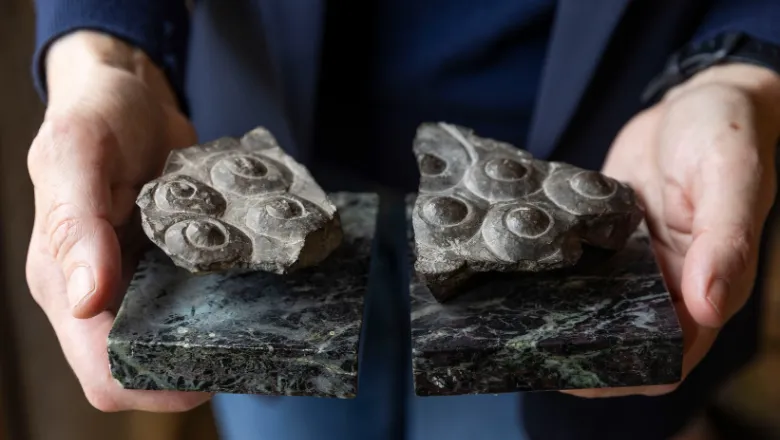We’ve made some exciting discoveries at Sissinghurst that show the impact on Harold and Vita of their Iranian travels. The exhibition is a wonderful opportunity to open a window on British-Iranian encounters in the 1920s.
Dr Lindsay Allen, Senior Lecturer in Ancient History at King’s
18 October 2023
Gifts exchanged between Virginia Woolf and Vita Sackville-West revealed
Never-before-seen keepsakes collected in Iran by writer Vita Sackville-West and her husband Harold Nicolson are the focus of a new exhibition now open at their former home in Kent, thanks to a research project led by the National Trust, with the participation of researchers from King’s, University College London, the Victoria and Albert Museum, and the University of Cambridge.

The exhibition, 'A Persian Paradise’, is on display at Sissinghurst Castle Garden in Kent and brings to life the period from 1925 to 1927, featuring objects and photographs – many of which have never before been on public display – collected by Vita and Harold during their travels to Persia, now modern-day Iran.
‘A Persian Paradise’ tells the story of how the country inspired Harold and Vita, from the design for Sissinghurst’s garden and interiors, to their writing and personal relationships. The exhibition also includes keepsakes and gifts acquired in Iran by Vita and given to her lover, renowned author and former King’s student Virginia Woolf. These will be displayed together for the first time in nearly a century along with photographs taken during Harold and Vita’s travels.
Researchers examined and identified objects from Iran in the collections at Vita’s home Sissinghurst Castle, and at Monk’s House in East Sussex, the home of Virginia Woolf.
Considered two of the most high-profile cultural figures of their generation, Vita and Harold wrote vividly about their experiences in the mid-1920s, contributing to a fascination for all things ‘Persian’. The decade saw major political changes in Iran, and Vita’s travelogues depict glimpses of this transition.
Vita and Harold’s personal photographs provide many glimpses of life and monuments in the 1920s that were transformed in the following decades. They photographed mounted tribesmen and migrating families whose way of life radically changed within a generation. Their many views of the ancient Palace of Persepolis show that they keenly explored the site before it was transformed by excavation in 1931.
A highlight of the exhibition are two pieces of stone that come from the ruins of Persepolis, which Vita visited in 1927 – one piece of which was a gift to Harold and the other for Virginia.
Dr Lindsay Allen, who researches the history of fragmentation and looting of the site, thinks the two pieces come from one of the sculpted bulls which guarded the columned portico of the Hundred Columned Hall. The stone pieces are believed to have already been in fragments when Vita and Harold found them at the site. She is considering whether Vita may have cut one of the pieces in half. She treated them as souvenirs and presented them as tokens of her affection to Harold and Virginia.
Virginia’s fragment later came to represent the ruin of their relationship. In 1934, regretting that Vita no longer loved her, Virginia wrote describing ‘the piece of Persepolis’ on her mantelpiece as ‘gathering dust’. Vita recalled it as ‘that paperweight’ behind which Virginia kept her letters or notes from rival romantic partners.
Also reunited for the first time since the 1920s, is a blue ‘cog’ dish, bought by Vita in an assortment at a bazaar in Tehran and given to Virginia. Usually displayed at Monk’s House, it will be exhibited alongside similar dishes from the group kept in Vita’s Writing Room at Sissinghurst.
It is poignant to see some of the objects from her travels that Vita gave to Virginia and to Harold which have been reunited for the first time since they were given. We hope visitors will enjoy finding out more about this period of the lives of two of the 20th century’s most eloquent observers and the new discoveries we have made about them that reflect the Sissinghurst we see today.
Nicci Obholzer, Senior House and Collections Officer at Sissinghurst Castle Garden
‘A Persian Paradise’, enhanced with music, and original film footage of Iran from the 1920s, can be viewed at Sissinghurst and runs until 24 March.
The exhibition was co-sponsored by the British Institute of Persian Studies and the Iran Society; the exhibition research was supported by specialists at Kings, University College London, University of Cambridge and the Victoria & Albert Museum.

